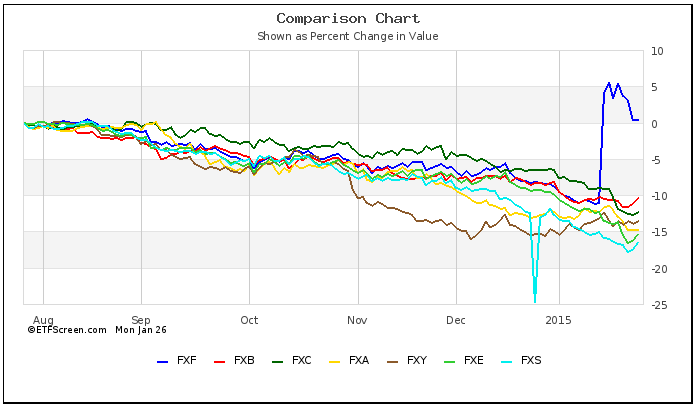Individual investors might be able to properly analyze a stock or even a few stocks. But while an exchange traded fund (one based on an equity index) is essentially just a basket of stocks, it might not be feasible for an individual investor to analyze an ETF as extensively as he or she would a stock, as the investor would need to value every single stock that the ETF represents. Fortunately, some valuation methods and principles that apply to stocks can also be applied efficiently to an ETF.
In this article, I will be talking about two Benjamin Graham’s investing principles that I use to help me value ETFs: Avoiding stocks (or in our case, ETFs) that have a Price/Earnings ratio that’s higher than the earnings yield of the stock + the stock’s growth rate (found this golden nugget at www.Joshua Kennon.com), look for stocks with price to book below 1.5, and investing with a margin of safety.
Look for ETFs with P/E below its earnings yield + growth rate
Say, an ETF you want to value has a P/E ratio of 15 (Each ETF provider might have its own way of calculating P/E, but we will get to that a little later). We start our analysis by finding the earnings yield of the ETF. You can get the earnings yield by dividing earnings by the price or dividing 1 by the P/E ratio. For our example, 1/15 = 6.6% earnings yield. The earnings yield is the profits that the company earned in the most recent 12-month period, expressed as a percentage of its market cap or share price, depending on how you look at it.
Let’s also say that the provider of the ETF estimates that the fund will grow earnings at 15% over the next 3-5 years. The 15% growth rate + the 6.6% earnings yield would equal to 21.6. The ETF has a P/E ratio of 15, so it passes the test of having a P/E ratio below its earnings yield + growth rate. We still need to look at the other 2 principles before we make any kind of decision, though.
Identify ETFs with price to book below 1.5
Benjamin Graham said that, for defensive investors, the price to book should generally not be above 1.5, but exceptions can be made if the P/E ratio is below 15. As a rule of thumb, he said that the P/E ratio times the price to book ratio shouldn’t be higher than 22.5. For simplicity’s sake, our example ETF will have a price to book of 1.5. So, 1.5 times 15 will equal to 22.5. This principle is meant for defensive investors, but if you don’t mind taking a little bit more risk, and you know how to properly research an ETF, then it can be ok for you to buy that ETF at a higher valuation.
Margin of safety
The margin of safety principle states that investors should only invest in a stock if the stock’s price is significantly below its intrinsic value, so as to reduce the risk of losses. By applying the first principle to our example ETF, we’ve found that the ETF’s rough intrinsic value can be said to be around a P/E of 21.6 (earnings yield 6.6% + 15% growth rate). And the current price of the ETF is a P/E of 15 (of course in real life the ETF will have a share price, but we will just use the P/E ratio as a proxy for price here). So, there is a margin of safety in our example, whether the margin of safety is significant enough is, of course, up to the individual investor.
With valuation methods (at least the ones that I talked about in this article) only giving us a very rough estimate of intrinsic value, forecasted growth rates that might not materialize or cover a long enough period, and as I mentioned earlier, different ETF providers potentially calculating the P/E ratio differently, which can result in inaccurate P/E ratios, investing with a margin of safety becomes especially important in the case of ETFs.
If you have any questions, or have anything that you would like to share, please don’t hesitate to comment. Thank you for reading, and may you always sustain good returns on your portfolio. Take care.
(Captain obvious side note: While I believe that the Benjamin Graham’s principles I talked about in this article can help us tremendously in valuing ETFs, investors also need to take into account other things like fees and etc.)



















